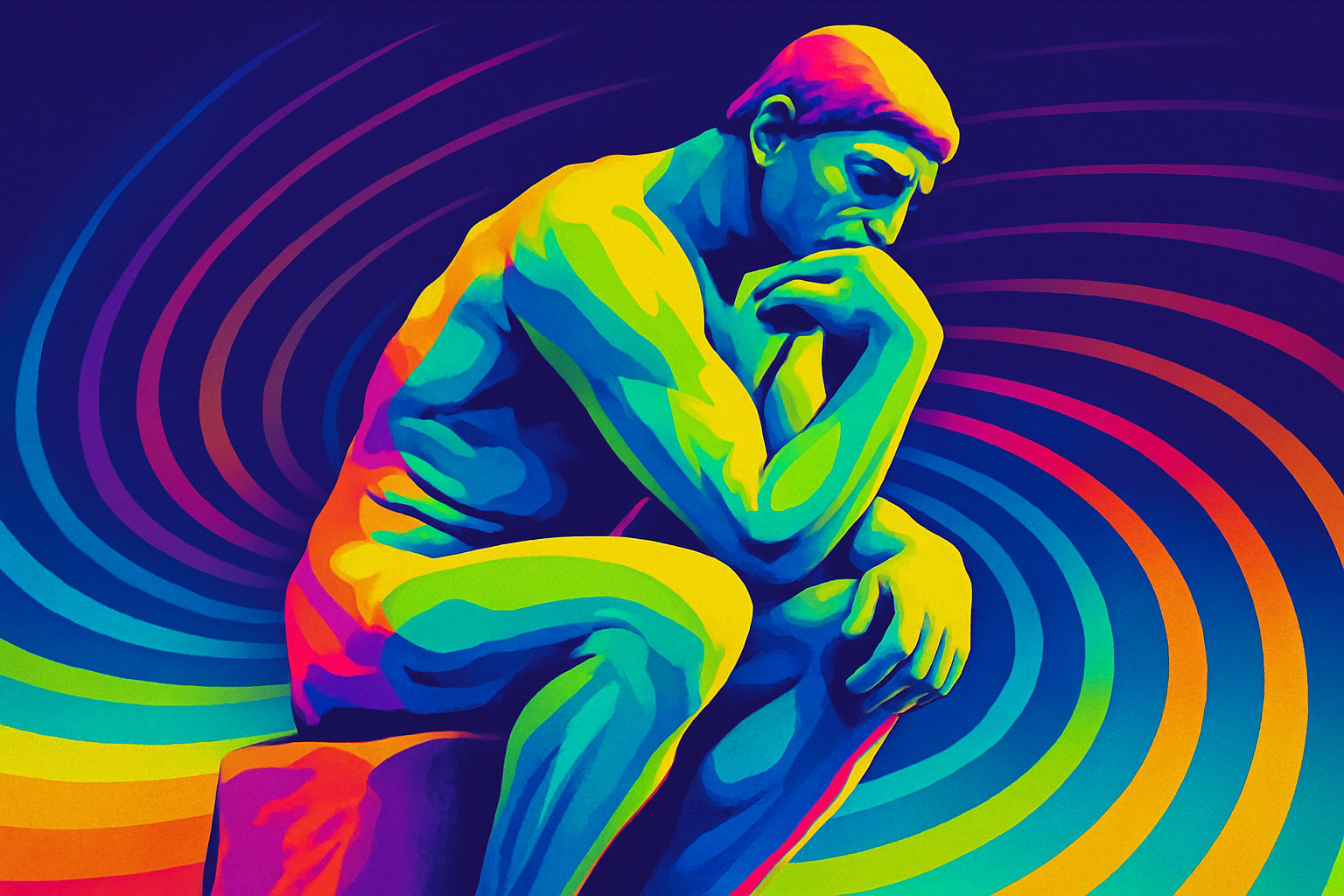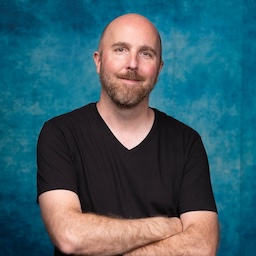
 John Moravec
John MoravecHow did we get from “schools kill creativity” to “AI kills critical thinking in schools?”
Rethinking the real crisis
When Sir Ken Robinson delivered his now-iconic TED Talk in 2006, proclaiming that “schools kill creativity,” he struck a chord that continues to reverberate through education systems worldwide. Robinson’s argument that our schools systematically squash imagination in favor of conformity and compliance sparked a movement for more creative, learner-centered approaches. Yet, less than two decades later, a new fear is echoing through these same halls: that artificial intelligence will now be the force that finally kills critical thinking in schools. How did we get from blaming the system to blaming the tool?
In much of the public debate, creativity and critical thinking are treated as either interchangeable or competing priorities, when in fact, both are essential to meaningful education and innovation. Yet, the same structures that kill creativity (e.g., expressed as imagination, originality, and divergent thinking) also discourage critical thinking (questioning, reasoning, and independent judgment). When students are rewarded for reproducing accepted answers rather than generating new ones or interrogating the old, neither skill is meaningfully developed.
The critique that schools stifle creativity and critical thinking is hardly new. Robinson’s work drew on decades of research from educational thinkers such as John Holt (1964), Paulo Freire (1970), and Ivan Illich (1971), who each, in their own way, indicted formal education for turning out obedient but unimaginative citizens. Schools, they argued, are designed less to nurture innovation and more to enforce social order and transmit existing knowledge and values. Standardized testing, rigid curricula, and a culture of compliance are core features, not bugs, of mainstream education.
Even progressive reforms often double back to the familiar: rubrics that “measure” creativity, scripted inquiry projects, and a relentless drive to “prove” learning through benchmarks. As educational historian David Labaree (2012) observes, schools are fundamentally conservative institutions, structured to preserve rather than disrupt the status quo. No surprise, then, that genuine risk-taking and creative exploration rarely survive within their walls.
The critical thinking “conundrum” in the age of AI
Much like creativity, critical thinking has long struggled for space within the structures of conventional schooling. Defined as the ability to analyze, evaluate, and synthesize information independently, critical thinking requires opportunities for students to question assumptions, confront ambiguity, and construct their own reasoned arguments (Paul & Elder, 2006). Yet, under the weight of standardized testing, prescriptive curricula, and “right answer” cultures, critical thinking is often reduced to formulaic exercises or overlooked entirely (Labaree, 2012).
The introduction of generative AI into this environment is a double-edged sword. On one hand, the risks are real: students may become passive recipients of AI-generated answers, relying on language models to complete assignments or summarize complex readings without engaging in substantive reflection. Automated essay graders and AI tutors, when poorly designed, may reinforce superficial pattern-matching rather than invite genuine questioning or analysis (Selwyn, 2023). There is a danger that, in the rush to efficiency and convenience, the hard, slow work of developing independent thought is further eroded.
On the other hand, AI, when intentionally integrated, offers unique opportunities to deepen critical thinking. AI-powered platforms can support inquiry-based learning, providing students with immediate feedback on the logic and coherence of their arguments or exposing them to multiple perspectives on contentious issues (Luckin et al., 2016). Advanced models can simulate debates, challenge students with counterarguments, and prompt metacognitive reflection: “Why do you believe this? What assumptions are you making? What evidence supports your claim?” In these cases, AI becomes a “thinking partner” rather than a shortcut or crutch.
The essential variable is not the technology itself, but how it is positioned within the learning environment. Used as a substitute for human judgment, AI risks automating conformity and shallowness. Used as a scaffold for reasoning, dialogue, and critique, it can become a tool for deeper, more robust critical thinking, helping students not only to answer questions, but to question answers.
Engaging the counterarguments
Of course, not all concerns about schools or AI are unfounded, nor do all defenders of the status quo seek to suppress creativity or critical thinking. Some argue that standardized curricula and assessments are necessary for ensuring equity, maintaining quality, or preparing students for civic participation in a complex society. In this view, structure provides a safety net and a shared baseline, protecting vulnerable learners from educational neglect or wildly divergent standards.
Likewise, those cautious about rapid AI adoption in education raise important questions. They point out that algorithmic bias, data privacy, and the opaqueness of machine-generated content can reinforce inequalities or mislead learners if left unchecked. Critics also note that without thoughtful integration, AI could become just another instrument for amplifying existing educational flaws (e.g., streamlining rote learning, policing plagiarism, or accelerating a test-prep mentality) rather than challenging students to think more deeply or creatively.
These are not arguments to be dismissed lightly. The challenge, then, is not to abandon all forms of structure or to embrace every new tool uncritically, but to ask which educational practices and which uses of AI empower students to become creative and critical thinkers. The danger lies in treating either schools or technologies as inherently liberating or oppressive, when the real work is in how we design, implement, and iterate upon them in context.
The AI panic: A convenient target for old anxieties
Today, the rapid integration of AI in schools has reignited old anxieties under new banners. Alarmist headlines and op-eds warn that generative AI will undermine students’ originality, foster dependence, and accelerate the “death“ of creativity and creative thinking (remember, we read the same reactionary op-eds when calculators and computers were brought into schools). The irony is hard to miss: institutions that have long struggled to cultivate creative thinkers now blame a tool for doing what their systems have always done. That is, limit the scope of imagination and play.
Often left unexamined is the parallel fear that AI might also automate away the need for independent reasoning (a core element of critical thinking) by supplying ready-made answers and short-circuiting reflective processes. In both cases, the deeper issue is not the tool, but the context and intention of its use.
Most schools and their most vocal defenders approach AI through a lens of control and risk mitigation, focusing on cheating, plagiarism, and the loss of authentic student voice. Rather than exploring the liberatory potential of these technologies, they are largely seen as threats to be contained. But as Marc Prensky (2025) argues in his recent essay on the evolution of today’s youth, the crisis is not that technology is “breaking” kids, but that adults are failing to adapt to a world where young people are rapidly extending their capacities in new directions.
Prensky flips the script: instead of fearing what technology will do to children, he urges us to see how young people are evolving new forms of creativity, agency, and connection through their use of digital tools (including AI). AI killing creativity is not the real risk, but that our institutions, and the adults who run them, will suffocate it by refusing to let go of outdated models and biases. Prensky’s advice: rather than doubling down on old playbooks, we should empower young people to explore, invent, and define creativity for themselves.
If schools kill creativity, can AI be a liberator?
If schools have historically functioned as engines of conformity, is it possible that AI, used wisely, could actually help liberate creativity? AI has the potential to be a boon for learner-driven exploration, giving students tools to experiment, remix, and realize ideas in ways previously unimaginable. Where institutions see risk, young people see possibility. The challenge is not to restrict or ban, but to redesign learning environments so that creative agency is amplified, not suppressed, by technology.
Perhaps the real question is not whether AI will kill or save creativity in schools, but whether schools are willing to imagine and engage with a different future: one in which their role shifts from gatekeeper to gardener, from enforcer of standards to enabler of new possibilities. The future of education will not be about keeping creativity alive despite technology (or schools themselves), but about unleashing it because of what new generations of tools can help us achieve that surpass our imaginations.
References and recommended readings
Craft, A. (2011). Creativity and education futures: Learning in a digital age. Trentham Books.
Freire, P. (1970). Pedagogy of the Oppressed. Herder and Herder.
Holt, J. (1964). How Children Fail. Pitman.
Illich, I. (1971). Deschooling Society. Harper & Row.
Labaree, D. F. (2012). Someone has to fail: The zero-sum game of public schooling. Harvard University Press.
Luckin, R., Holmes, W., Griffiths, M., & Forcier, L. B. (2016). Intelligence Unleashed: An argument for AI in Education. Pearson.
Mollick, E., & Mollick, L. (2023). Assigning AI: Seven Approaches for Students, with Prompts. SSRN. https://dx.doi.org/10.2139/ssrn.4475995
Paul, R., & Elder, L. (2006). Critical Thinking: Tools for Taking Charge of Your Learning and Your Life (2nd ed.). Pearson.
Prensky, M. (2025). Evolution before our eyes: What’s happening to our kids everywhere. Medium. https://medium.com/@marcprensky
Robinson, K. (2006). Do schools kill creativity? [Video]. TED Conferences. https://www.ted.com/talks/ken_robinson_do_schools_kill_creativity



